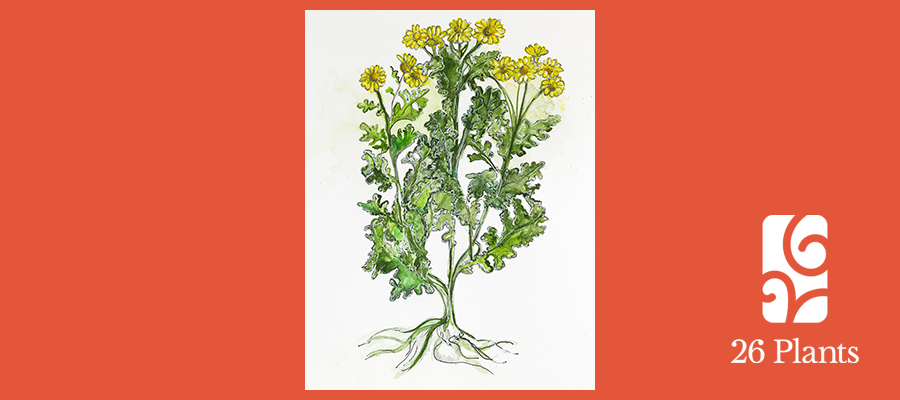Ragwort
Senecio jacobaea
John Simmons

Ragwort rant
Call me weedy – call me trouble
and then they double
the insults with worse
so I reply with a curse
I tell them I’ll kill
their precious horses – I will –
after all they beat me
trample over and eat me
and that’s before I can do
the job I’m here to do –
offer leafy veins to moths
black-and-red like goths
“oh a cinnabar” people coo
and what’s that to you?
you say “what a beauty”
while I just do my duty
giving life to another
like I’m their mother
they’re the ones are needy –
even tho’ they call me weedy.
Stand up for ragworts
Ragwort. “That’s tricky.” I remember Kaye Brennan giving me the official Wildlife Trusts warning: “It’s a bit bold to include it”. Her boldness, not mine. OK, that’s fine.
The problem is, it’s noxious, toxic. Particularly to cows and horses when they eat it in hay, perhaps among the grasses just a filler. But unlike 99% of plants, it’s a killer. And, in human eyes, that greatest of crimes, a killer of favourite farmyard animals.
Oh, a problem for our times, a moral dilemma. We do like our plants to be beautiful, fragrant, and somehow useful to other creatures. So, does the ragwort have any redeeming features?
Not the flower to make into a bouquet (known as ‘Stinking Willie’), but hey, handsome enough in its own way. Bright yellow flowers, counted as a weed for casting its seed so far and wide. But these days we’re on the side of plants maligned as weeds; let’s cut it some slack, let it have its place in the sun.
And it’s true, they have much to commend them to you. For one thing they draw me easily into the fun of rhyme, as John Skelton used to do once upon a time. They bring out in me that deep-felt need to stand up for the underseed.
So how can we count the ragwort’s blessings? It doesn’t take much research or thought, when Wikipedia’s always at our bidding. So now I read ragwort’s role in the nectar top ten, letting insects spread essential pollen. To provide food for pollinators ragwort is not only good but great, as butterflies, bees and beetles know; but consider the fine case of the cinnabar moth, now in such rapid decline. Looking every inch the glorious butterfly this moth relies exclusively on ragwort for its precarious survival.
If we kill the ragwort there’s no chance of a cinnabar moth revival. It shows the dilemma at the diverse heart of nature. Everything is connected, every plant, every creature. Nature wants everything to feature, on fair terms without fear or favour.
Nature tells us that for us to thrive we all need to support others to survive. So, they are all worthy, cinnabar moth and ragwort need each other, as we need them. We’re all on this sinking ship, a planet of plants holed below the waterline by our actions every day, but perhaps the ragwort, not us, will be on that last lifeboat floating away.
Image by Jenni Wallace
